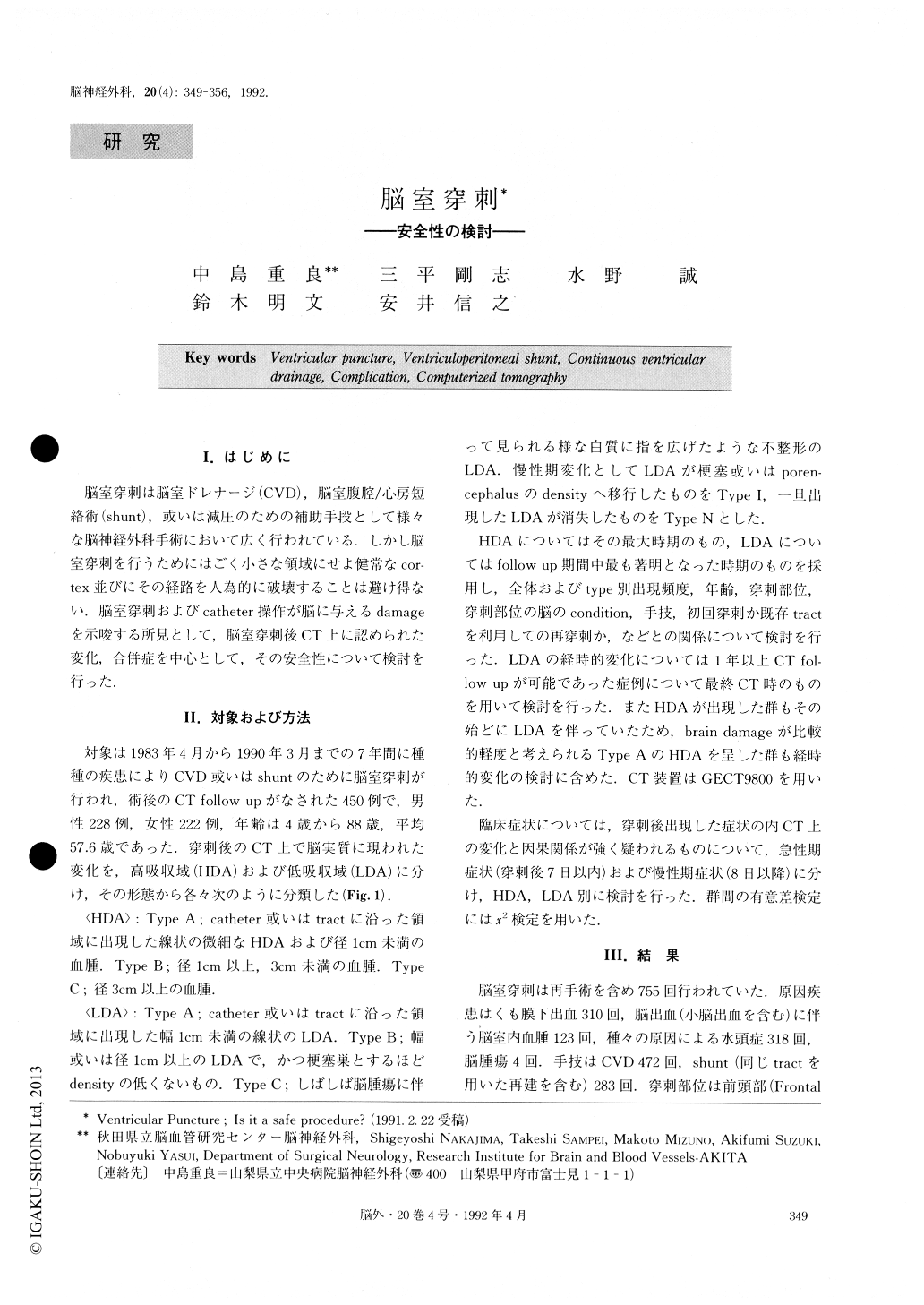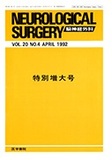Japanese
English
- 有料閲覧
- Abstract 文献概要
- 1ページ目 Look Inside
I.はじめに
脳室穿刺は脳室ドレナージ(CVD),脳室腹腔/心房短絡術(shunt),或いは減圧のための補助手段として様々な脳神経外科手術において広く行われている.しかし脳室穿刺を行うためにはごく小さな領域にせよ健常なcor—tex並びにその経路を人為的に破壊することは避け得ない.脳室穿刺およびcatheter操作が脳に与えるdamageを示唆する所見として,脳室穿刺後CT上に認められた変化,合併症を中心として,その安全性について検討を行った.
Four hundred and fifty patients underwent 755 ven-tricular punctures as a procedure for continuous ven-tricular drainage (CVD), or ventriculoperitoneal/ventri-culoatrial shunt (shunt) between April, 1983 and March, 1990. In all patients, postoperative findings on CT scan and related clinical manifestations were stu-died.
Of the total of 755 punctures in 100 cases (13.2%) some high density areas (HDA) (i.e. intracerebral hemorrhage) appeared on CT scans, and, of these, HDA larger than 3cm in diameter (Type C) was seen in 12 cases (1.6%). On the other hand, some low densi-ty areas (LDA) appeared in 448 cases (59.3%), and, of these, an extensive LDA (Type C) was seen in 65 cases (8.6%). LDA on CT scan tended to improve gradually with time, and in one third of the cases it was undetect-able one year after puncture. Nine percent of the LDA decreased in density, and they were regarded as areas of infarction or porencephalus.
The factors considered to affect postoperative HDA were 1) old age, 2) puncture in the occipital region, 3) puncture in a previously damaged brain area, 4) re-puncture using the same tract within a short interval from the previous puncture, 5) CVD. Conversely, fac-tors that affected the LDA were 1) low age, 2) punc-ture in the occipital region, 3) puncture to normal, non-damaged brain, 4) puncture using a new tract. Ten out of 12 patients with large HDA (Type C) showed deterioration of consciousness level or epilepsy as an acute manifestation, and a prolonged disturbance of consciousness. Mental change and/or homonymous hemianopia were seen in all surviving patients in the chronic phase. One patient who underwent puncture in the occipital region had postoperative homonymous hemianopia that was considered to be caused solely by the effect of the puncture. Also, many patients de-veloped postoperative signs and symptoms that were supposed to be caused by the puncture but which actu-ally had been obscured by the clinical manifestations of the original disease.
Ventricular puncture is not a safe procedure and it should be considered only if another procedure such as spinal drainage or lumboperitoneal shunt is unavailable.

Copyright © 1992, Igaku-Shoin Ltd. All rights reserved.


